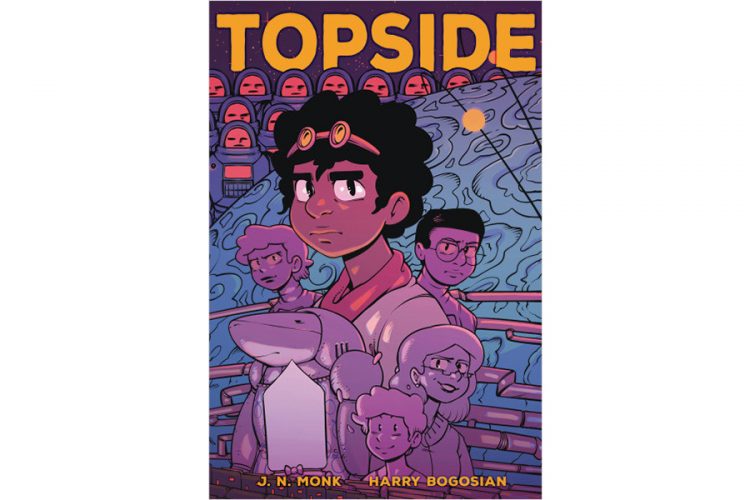Editor’s Notes on Topside

by Greg Hunter, Editorial Director of Graphic Universe
Let the art do the talking. That’s usually sound advice for a graphic novel creator—embrace the visual nature of the form.
But unless a comic is completely wordless, the process is rarely that simple. Every graphic novel you read is the result of countless decisions about when to include text, when to omit text, and the different roles a word can have relative to a picture: echo, clarifier, counterpoint, and countless others.


The exchange between Harry Bogosian’s art and J.N. Monk’s text is one of my favorite things about the recent Lerner release Topside. The story follows Jo, a repair technician from a subterranean society, who makes one big mistake and must go above ground to fix it. Jo’s world is slowly falling apart—we gather that if she hadn’t caused this particular catastrophe, another one was just around the corner. By necessity (or so she might argue), she has become headstrong, even hardened. Readers get most insights into Jo through her “personal autobio log,” which pops up every so often throughout the story. Even in her own journal, she’s a guarded character—and it turns out that’s half the fun.


Once Jo goes topside, she travels lands like none she’s ever seen, and here especially the story finds a fun tension between words and pictures. Jo’s logs tell the tale of a consummate pro—unflappable, unintimidated, unimpressed—but readers can watch her react to the wonders of this above-ground world. Her words can conceal, can downplay the impact of realizing she’s stepped onto a living village or the rush of her first high-speed trip across the alien desert, but Jo’s face doesn’t lie. The gentle irony of these panels hints at her inner journey, a trek toward a more cooperative, more open version of herself. The art does the much of the talking, but much of that is about what the words don’t say—a successful combination in a lively, heartfelt book.
—
Comments